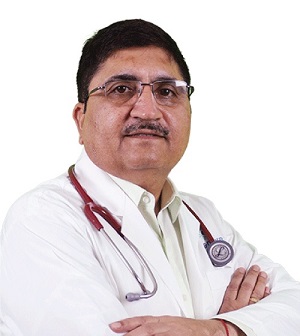Endoscopy is a medical procedure that involves the insertion of a long, flexible tube with a camera and light at the end, called an endoscope, into the body to view the internal organs. It is a valuable diagnostic and therapeutic tool used by gastroenterologists to examine and treat conditions of the digestive system.
Diagnostic Endoscopy:
Gastrointestinal symptoms are common, and endoscopy is often used to diagnose conditions like acidity, indigestion, abdominal pain, vomiting, difficulty in swallowing, bleeding from the mouth, and foreign body ingestion. These symptoms can be caused by a variety of conditions, and endoscopy helps identify the underlying problem. During the procedure, the doctor can take tissue samples for biopsy, remove polyps, and look for any abnormalities that may be present.
Therapeutic Endoscopy:
In addition to diagnostic use, endoscopy is also used therapeutically to treat various conditions of the digestive system. Some of the procedures performed using endoscopy include:
Ulcer bleeding treatment by clipping/injection/diathermy: Endoscopic techniques can be used to stop bleeding from ulcers by clipping, injecting medication, or using diathermy to seal the ulcer.
Endoscopic variceal band ligation:
This procedure is used to treat bleeding varices, which are enlarged veins in the esophagus or stomach.
Foreign body removal:
Endoscopy can be used to remove foreign objects, such as coins or bones, that have been swallowed.
Esophageal stent placement for cancer of the food pipe:
Stents can be placed in the esophagus to help keep it open and allow food to pass through in cases of cancer-related narrowing.
Duodenal stent placement for cancer/stricture of duodenum:
Stents can also be placed in the duodenum, the first part of the small intestine, to treat narrowing caused by cancer or strictures.
Esophageal/stomach dilation for cases of post-corrosive ingestion/stricture:
Ingesting corrosive substances can cause damage to the esophagus or stomach, leading to strictures. Endoscopic dilation can help relieve the narrowing and improve swallowing.
Placement of Ryles tube for feeding purposes:
Endoscopy can be used to place a Ryles tube, which is a thin, flexible tube that passes through the nose or mouth and into the stomach. It is used for feeding purposes in cases where the patient cannot eat normally.
Percutaneous endoscopic gastrostomy (PEG) for long-term feeding:
In cases where a patient needs long-term feeding, a PEG tube can be inserted through the abdominal wall and into the stomach using endoscopy.
Polypectomy (endoloop):
Endoscopic techniques can be used to remove polyps, which are growths on the inner lining of the intestine. The endoloop is a device used to remove larger polyps by looping a wire around them and cutting them off.
In conclusion, endoscopy is a versatile tool that can be used for both diagnostic and therapeutic purposes. It is a safe and effective way to examine and treat conditions of the digestive system. If you are experiencing any gastrointestinal symptoms, speak to your doctor to see if endoscopy may be the right choice for you.
Dr. Sandeep Dhavan
MBBS,MD (Medicine), DM (Gastroenterology) (PGIMER-Chandigarh, India)
Senior Consultant at Evercare Hospital Chattogram
Gastroenterology & Hepatology

